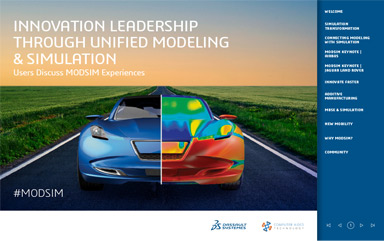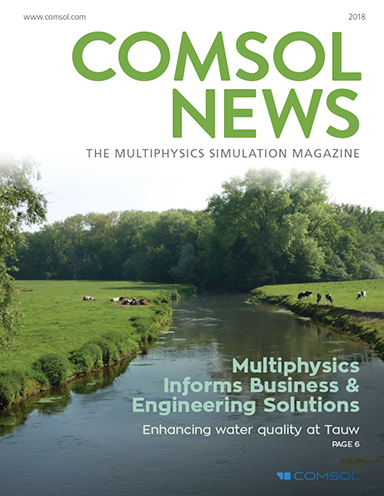Latest News
July 5, 2013
The conversation began months ago when I posted a motion for discussion in the LinkedIn group called “New Trends in CAE Simulation.” I asked, “Do you agree or disagree? It's dangerous to simplify FEA and make it accessible for the masses.”
There's clearly a push among computer-aided design (CAE) software vendors to package their simulation programs for a broader audience. These programs have historically been the domain of Ph.D.-level experts. Some critics see the move to reinvent them for designers and engineers as “dumbing down” a complex process. Others believe greater accessibility to simulation through simpler interfaces would lead to better designs.
in LinkedIn discussion forum, John Chawner, president and cofounder of Pointwise, noted, “Should we simplify it? Ah, here's the magic. Does simplify mean 'make it idiot proof?' Then by all means, let's go for it. Does simplify mean 'cripple it so that it's not useful for anything?' Then forget it.”
Carlo Poloni, president of Esteco, chimed in, “I believe ... the engineer who builds the simulation (FEA) model and the one who uses it might be not the same person and the type of access to information/execution can be kept different. Under this perspective, there is no need (and probably it would be a danger) to simplify too much the specific FEA tool ...”
Joe Walsh, a veteran of the CAD community and founder and CEO of intrinSIM, added, “One key aspect is not to 'simplify' or 'dumb down' the simulation application but to 'smarten' them up to encapsulate expert knowledge and range of applicability. One good examples of this is the focused applet or vertical applications ... with pre-configured scenarios.”
So I invited three participants of this online conversation—Dennis Nagy, the principle at BeyondCAE; Sunny Manivannan, VP of Business Development at Rescale; and Jeff Waters, an independent CAE expert and industry watcher—to discuss the same motion in an Oxford-style debate.
For a moment, the so-called debate seemed to be in jeopardy as all three panelists came out against the motion. But the agreement among them notwithstanding, Nagy, Manivannan, and Waters engaged in a lively conversation about the pros and cons of simplified simulation with different perspectives.
Manivannan distinguished user-experience improvements and simplifying the physics setups as two different types of simplification approaches. “There's a lot of idiosyncrasies that are very tool-dependent,” he reflected. “For example, using ANSYS and using MSC Nastran are two completely different experiences. And the skill set required to run these models successfully under each code is very different ... That's another way to simplify—coming to a more standard process on how you set up physics.”
Nagy said, “It'll be a long time before people who have no engineering training can do simulation, but even that will come, though at a much later stage. So the dividing line now is between simulation experts in a company and product development and design engineers. So making it accessible to that broader community is the key here ... We have to figure out how to do it, and not say that it's dangerous and try to stop it.”
Waters said, “If you take a look at SolidWorks Simulation or Autodesk simulation tools, they're about as easy as you can make a general purpose tool ... But that's not going to be enough to spread into the general population.” Waters has a more ambitious definition of accessibility to the mass. He cited Twitter as his model for ease of use and mass appeal.
Waters also posed a question to the panel: “What kind of analysis should the masses be doing? Do we expect the masses to be handling ... something like flow through a room? Or, when people say the masses shouldn't be engaging in CAE, are they referring to high-end physics?”
Manivannan revealed he'd like to see even high-school students using simulation. “Get them started with simple simulation that helps explain what's going on around them,” he said. Nagy added, “The issue of facilitating it—what that costs, and who's going to pay for it—is one of the problems.”
Nagy observed, “Those of us from education community, end-user community, or vendor community will sometimes point the finger at the other, to say, 'Well, it's your responsibility [to simplify simulation] ... It's in everybody's interest. You somehow have to get that cycle moving.”
I'd like to hear your thoughts too. Would you have supported the motion? Or spoke out against it? What, do you feel, is the right definition for “masses” qualified to use simulation? How easy should the software be? How do you put in safeguards to prevent unintentional errors in a simplified simulation software? Please share them as comments below here.
The full panel discussion is available in the podcast below:
Subscribe to our FREE magazine, FREE email newsletters or both!
Latest News
About the Author
Kenneth Wong is Digital Engineering’s resident blogger and senior editor. Email him at [email protected] or share your thoughts on this article at digitaleng.news/facebook.
Follow DERelated Topics








